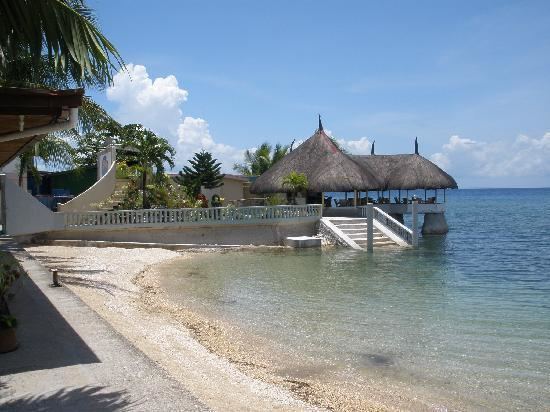Country Philippines Barangay Area 155 km² Province Cebu | District 2nd district of Cebu Elevation 1,013 m (3,323 ft) Local time Thursday 9:24 AM | |
 | ||
Region Central Visayas (Region VII) Demonym(s) Dalaguetenon
Dalaguitnon Weather 26°C, Wind N at 23 km/h, 87% Humidity Neighborhoods Obo, Cansiguin, Cawayan, Tuba | ||
Osme a peak mantalungon dalaguete cebu
Dalaguete is a 1st municipal income class municipality in the province of Cebu, Philippines, located 84 kilometres (52 mi) south of Cebu city. It is bounded on the north by Argao, on the south by Alcoy, on the west by the municipalities of Badian and Alegria and on the east by the Bohol Strait. According to the 2015 census, it has a population of 67,497. In the 2016 electoral roll, it had 35,658 registered voters. Dalaguete one of the trails to Cebu's highest summit, the Osmeña Peak.
Contents
- Osme a peak mantalungon dalaguete cebu
- Map of Dalaguete Cebu Philippines
- History
- Land characteristics
- Climate
- Barangays
- Demographics
- Economy
- Utanon Festival
- References
Map of Dalaguete, Cebu, Philippines
History
The natives look upon the tree not for its gigantic size, nor for its fruit which is of no use, but rather for the religious observance of the natives.
They highly consider this tree for their belief that it harbors spirits or diwatas who could impose sickness if maltreated or hand in fortunes and gifts if placated. When fully grown, the intertwining roots are exposed from the earth and form huge caverns that could house several people.
The dalakit (Ficus benjamina) tree is the foundation of the origin and name of Dalaguete. In ancient times, before the coming of the Spaniards, these trees had been used by people as major landmarks. People gathered under the encompassing shades and conduct social and economic activities such us festivities, contest, trading meetings and other community gatherings. They establish market places under the shades of the dalaket where they sell their products and conduct trade with local roving traders bringing in Chinese and Asiatic goods from the port of Cebu.
The place where the church or the poblacion were laid would have been the site of a communal gathering area for the natives. It was also the abode of a huge dalaket tree which provide shade and shelter while people conduct their activities. "Adto ta mag-abot sa dalakit". "Adto ta magtigom-tigom sa dalakit" [Let us meet at the dalakit]. These and other popular phrases have the common practice of our ancestors when coming up with an agreement to meet or conduct an activity specifically at the site where the dalakit is situated. For several generations in pre-Hispanic Dalaguete, the area has always been unofficially called as dalakit. Its accessibility and its reputation as a communal area for community gathering have prompted the Spanish authorities to construct the church and eventually establish the area as part of an encomienda. From this common ground, and from this tree, begun the conception of a larger town which later come to be known as Dalaguete.
Land characteristics
Climate
Tropical climate prevails year round in Dalaguete. The temperature is high and varies little with a difference of about 3 °C (5.4 °F) between the coldest month which occurs around January and hottest month around May. The mountain barangays are cold and Mantalongon is considered the "Little Baguio of Cebu". Average daytime temperatures except in mountainous region range from 22.2 to 32.1 °C (72.0 to 89.8 °F). Humidity is 77%.
Barangays
Dalaguete comprises 33 barangays:
Demographics
In the 2016 electoral roll, it had 35,658 registered voters, meaning that 53% of the population are aged 18 and over.
Economy
Utanon Festival
Dalaguete celebrates its annual town fiesta in honor of its patron saint, San Guillermo, every 9 and 10 February. One of the highlights of the celebration is the street dancing and showdown competition called "Utanon Festival".
Utanon Festival is also a form of thanksgiving for all the blessings and graces the Dalaguetenons have received from San Guillermo and for giving them a place so rich in agriculture and music. Utanon Festival is a celebration of good harvest through dance and music. The town is known as the "Vegetable Basket of Cebu" and Mantalongon as the "Summer Capital of Cebu".
